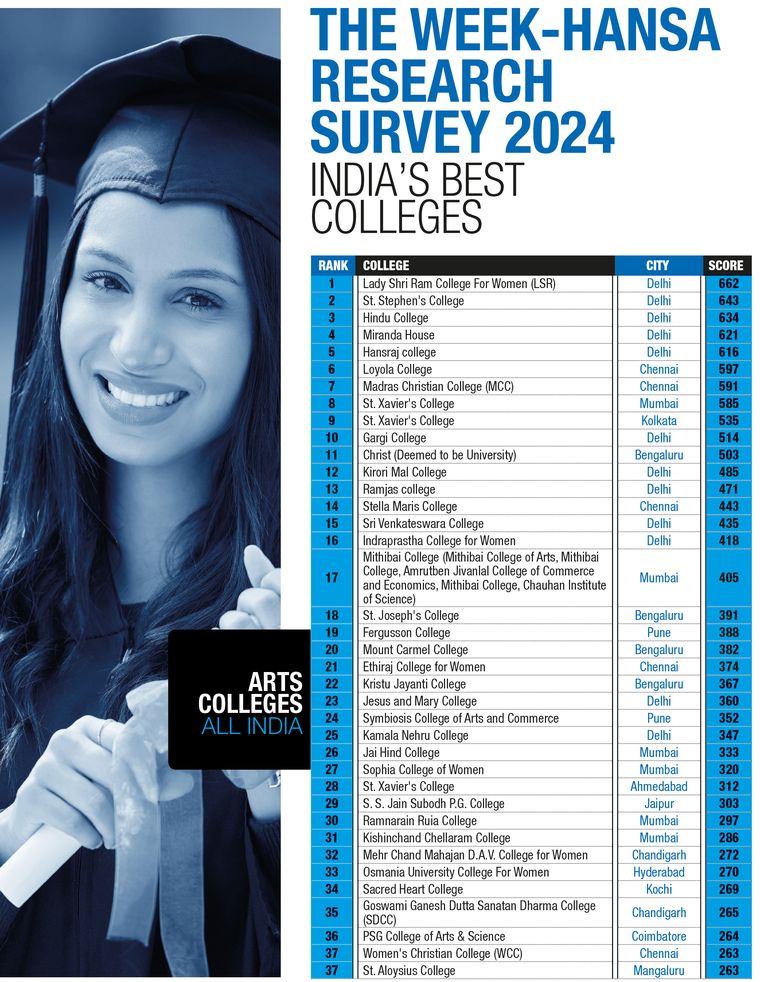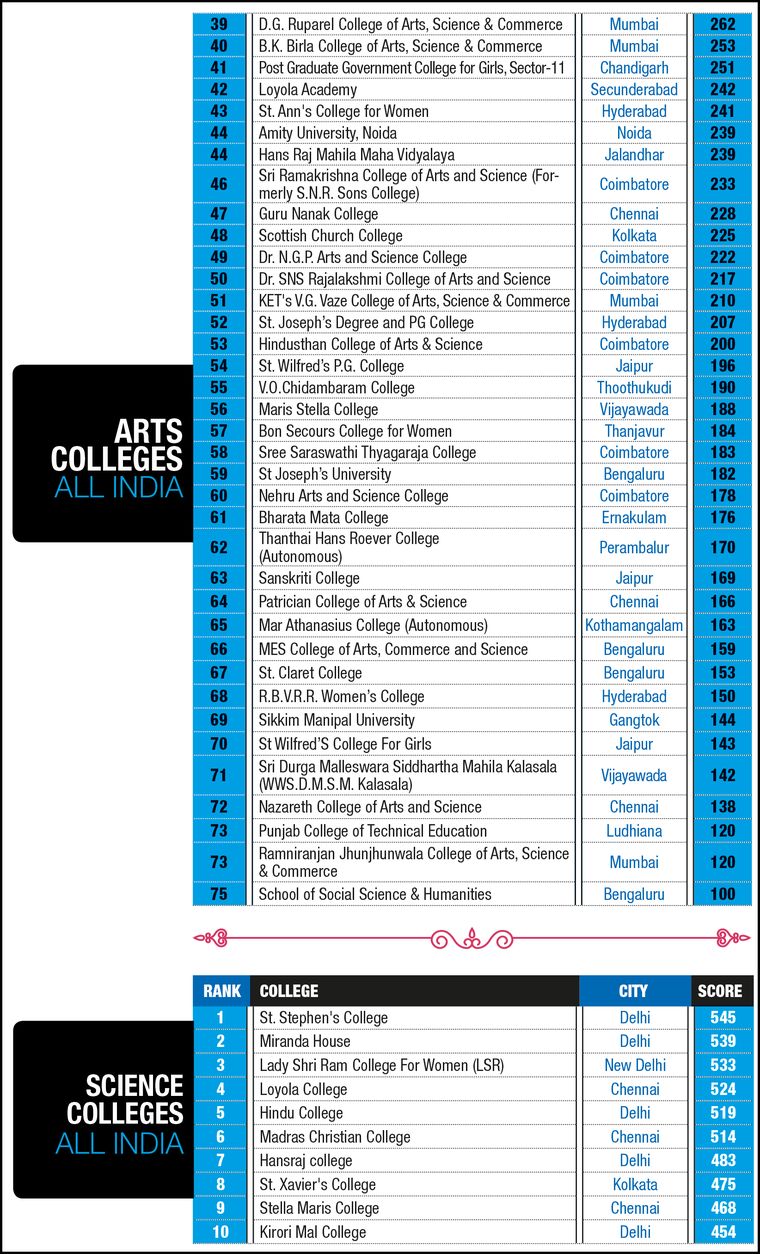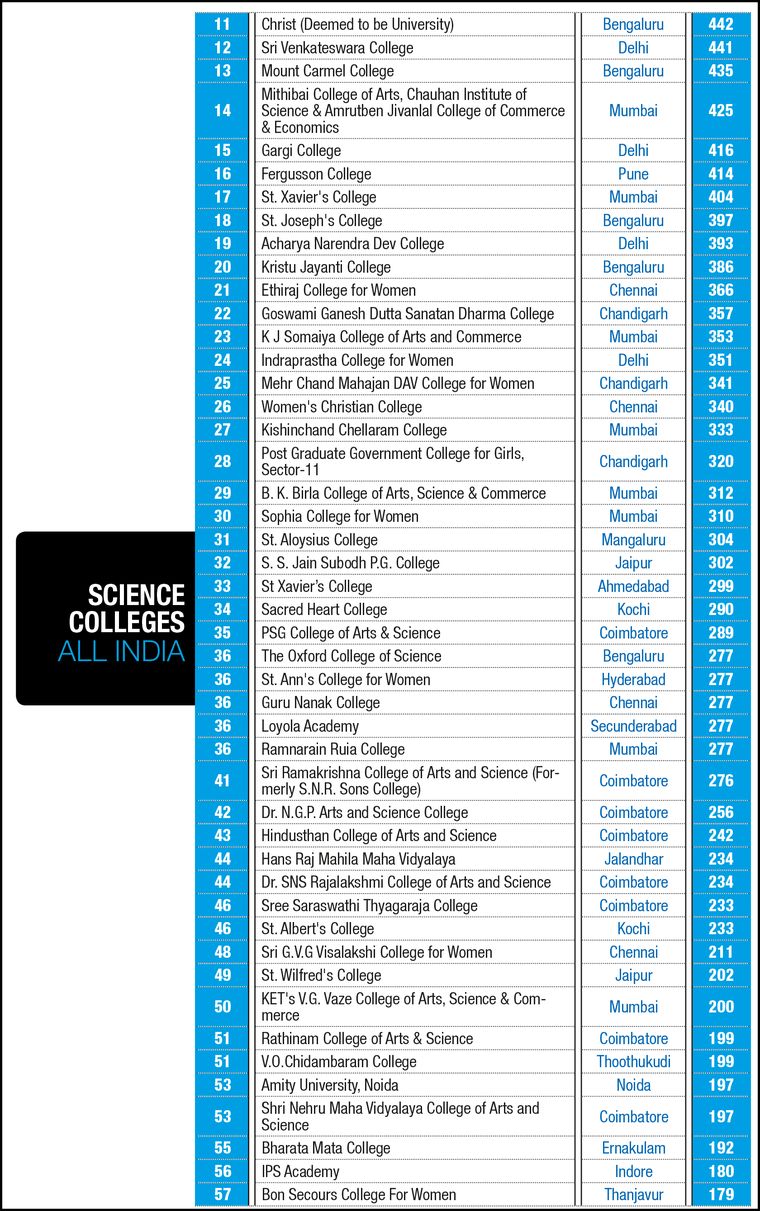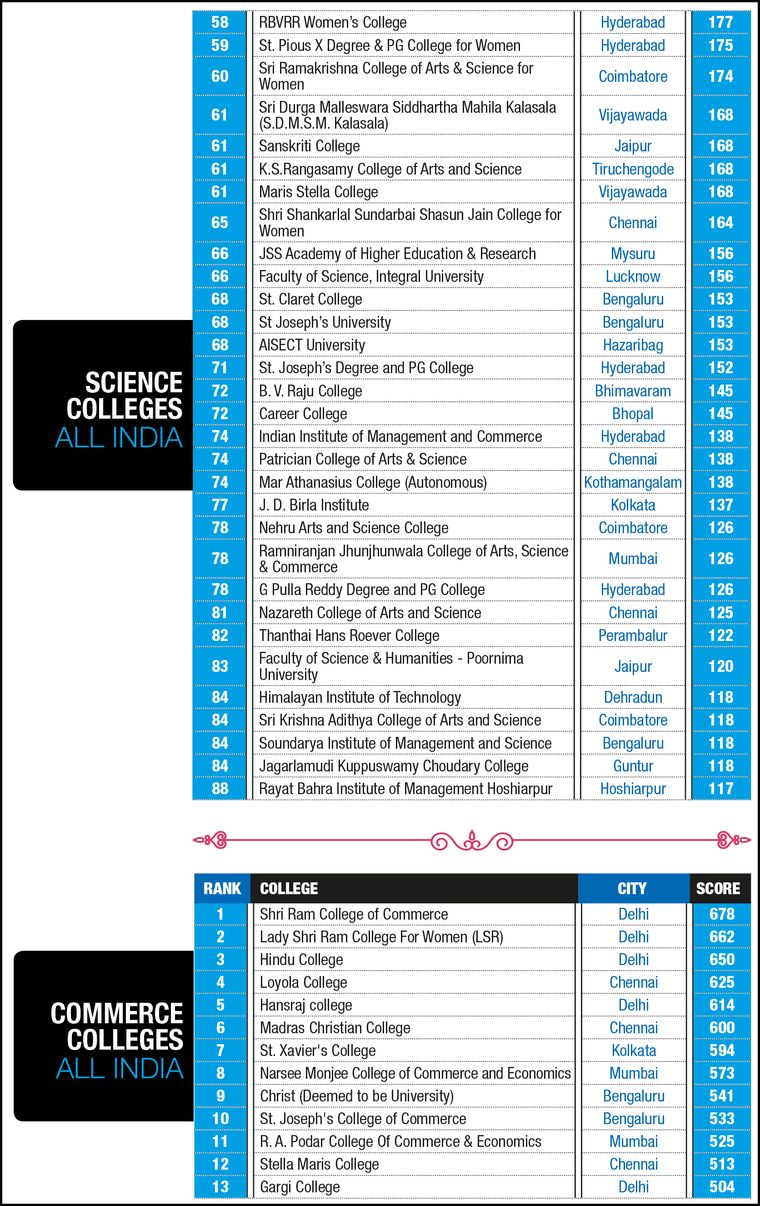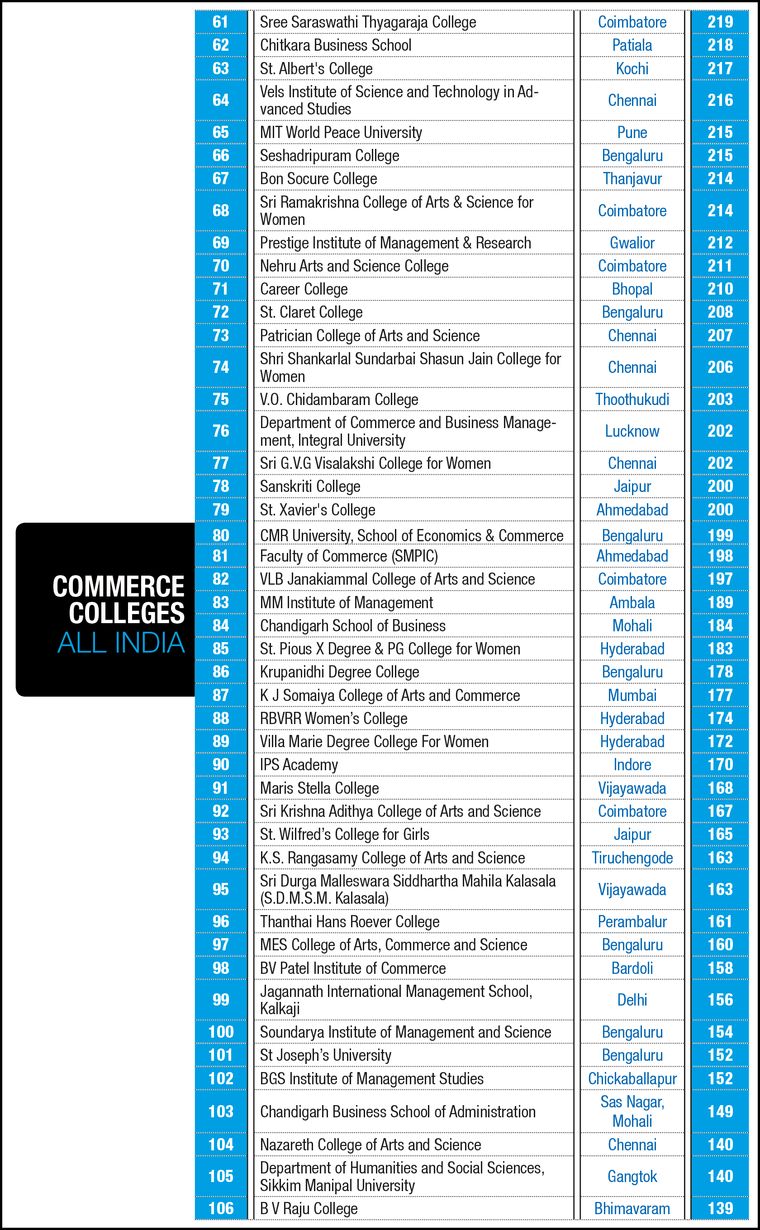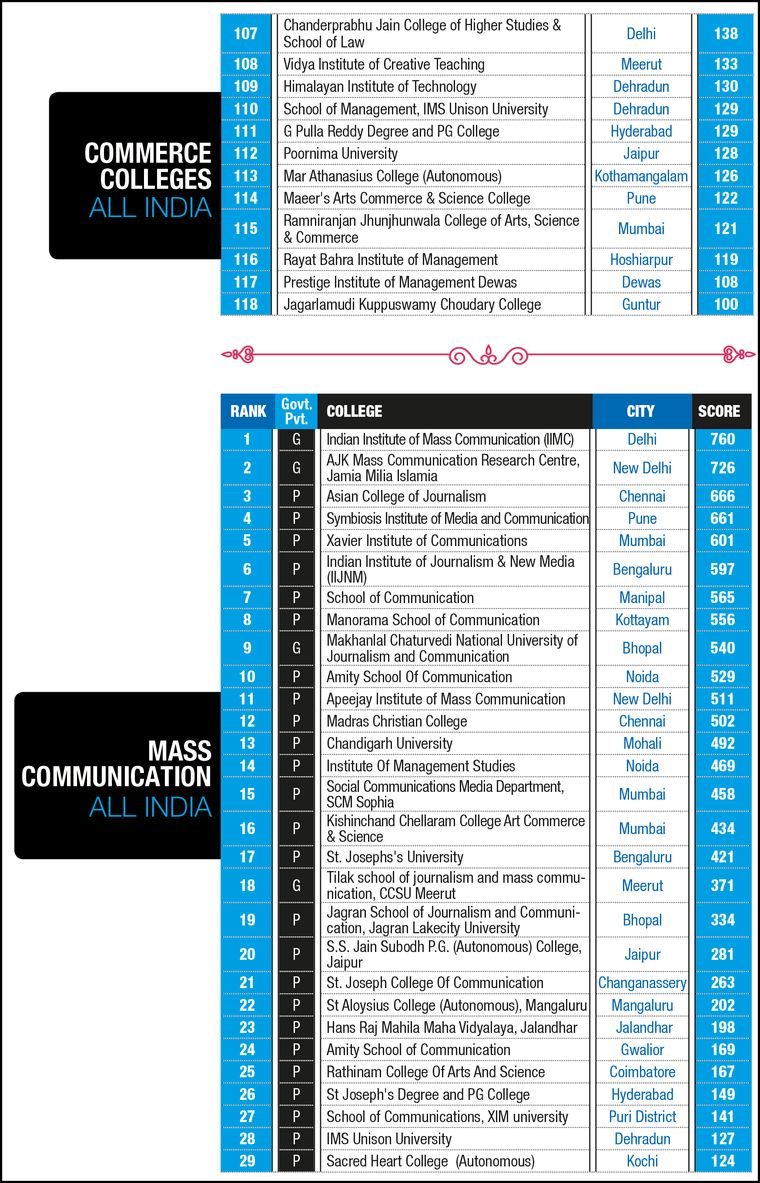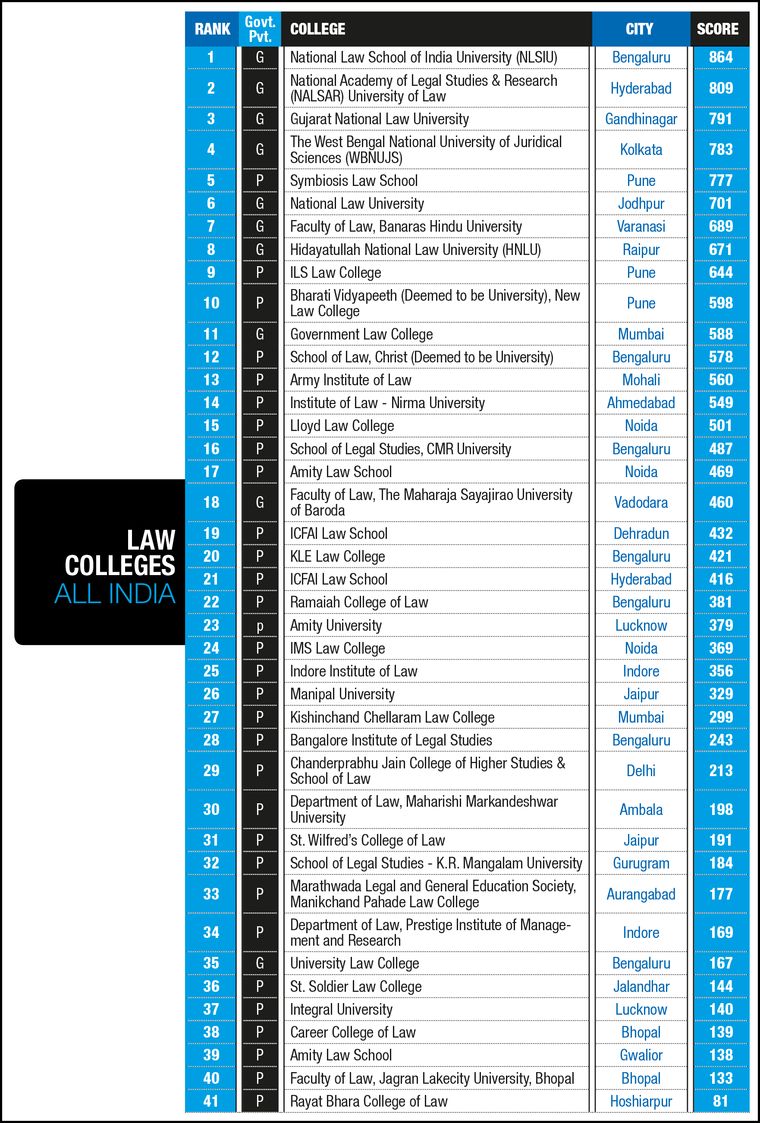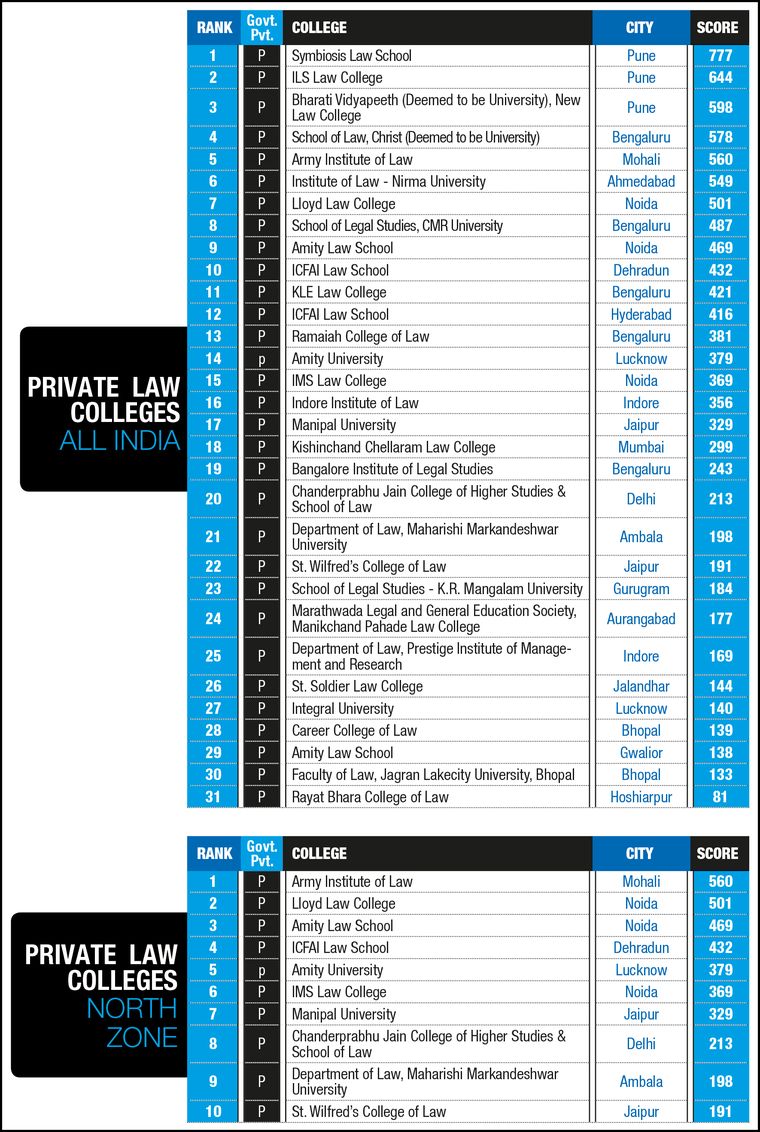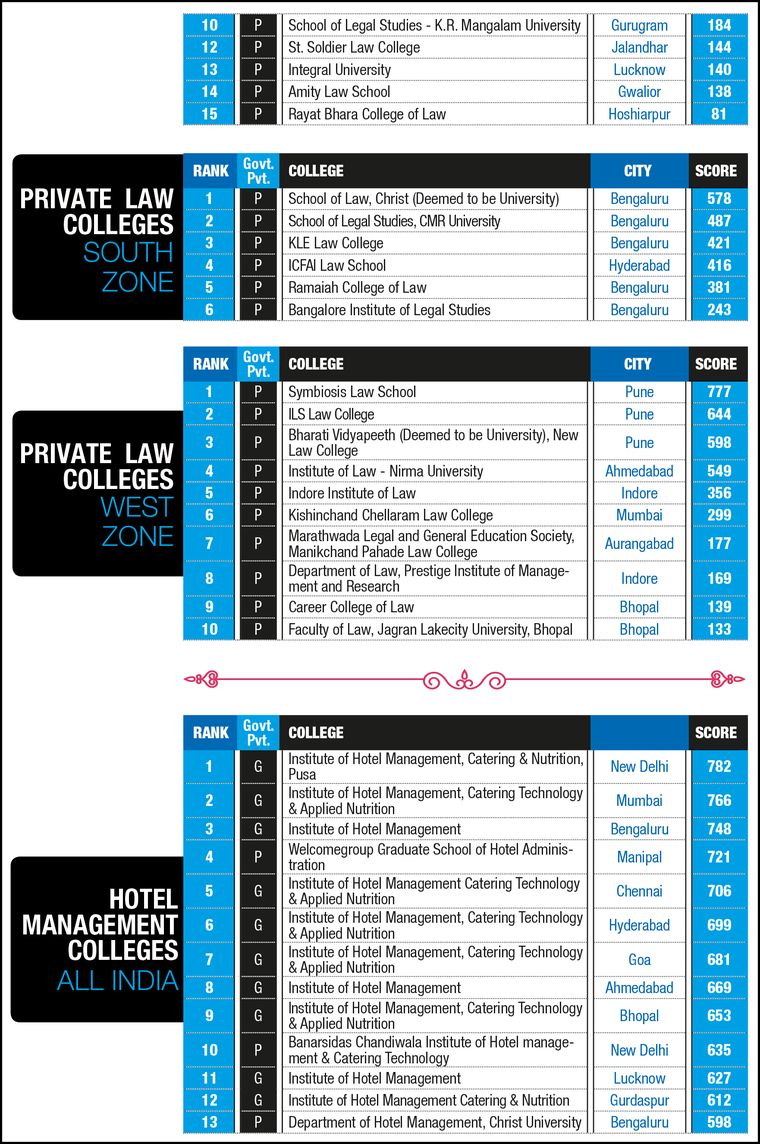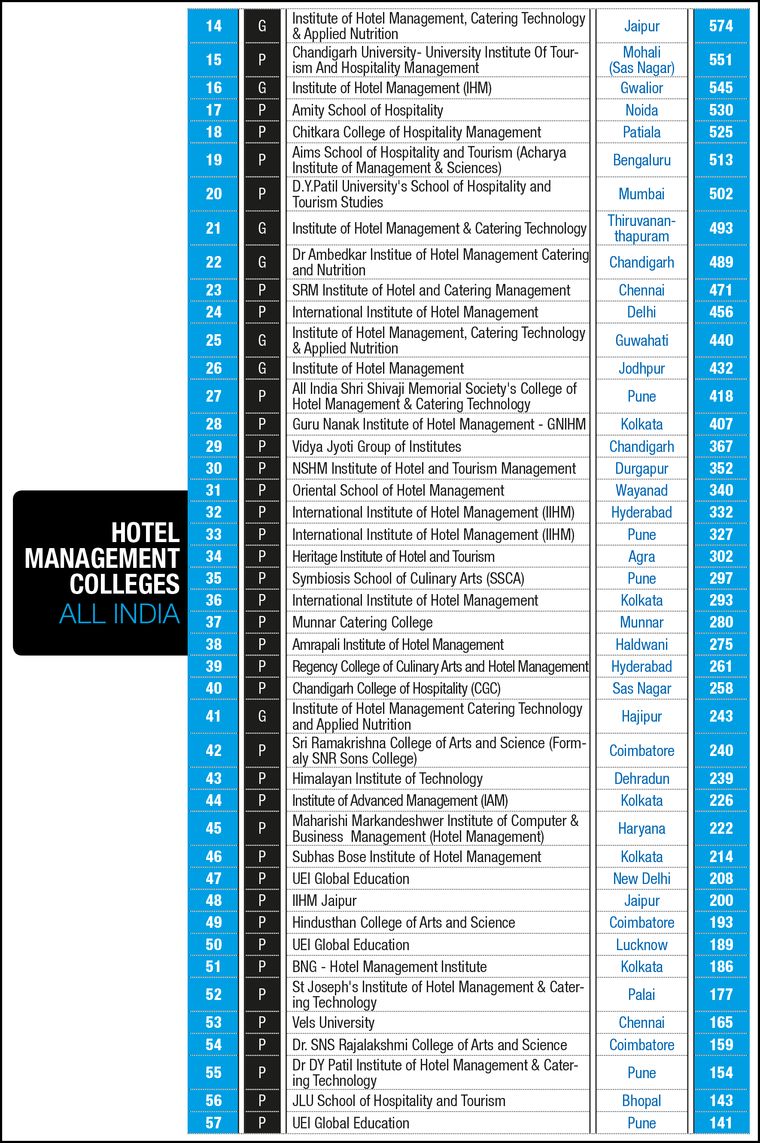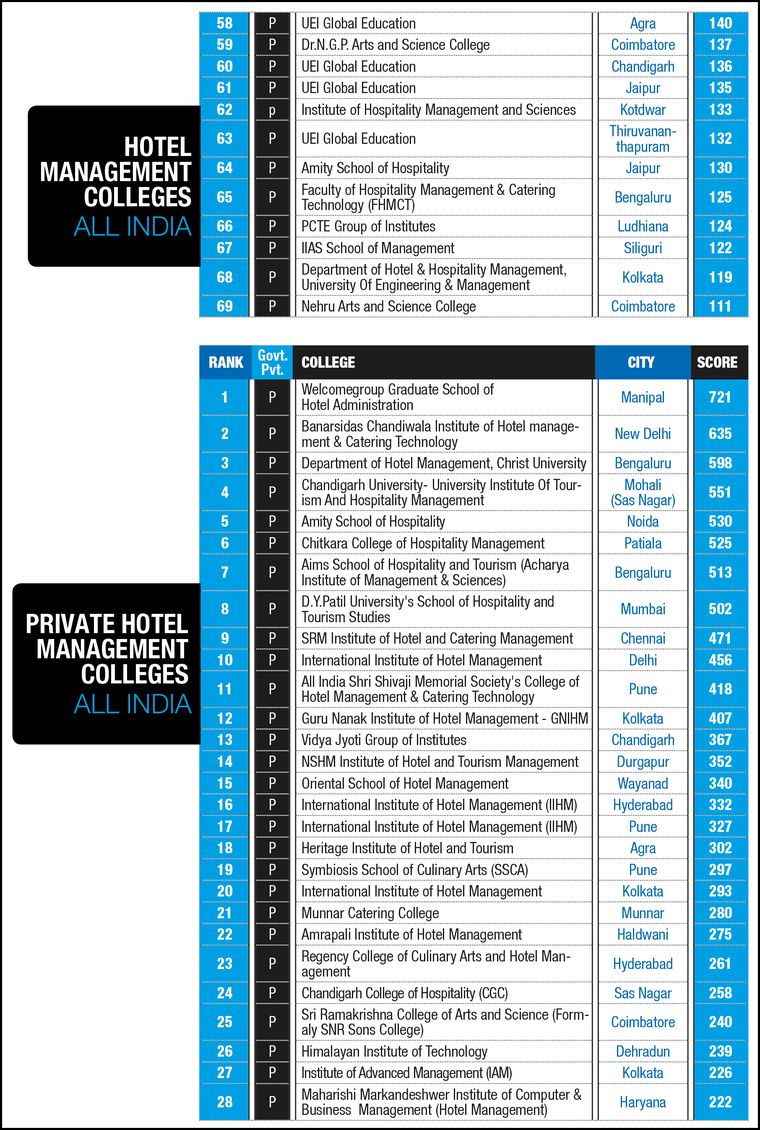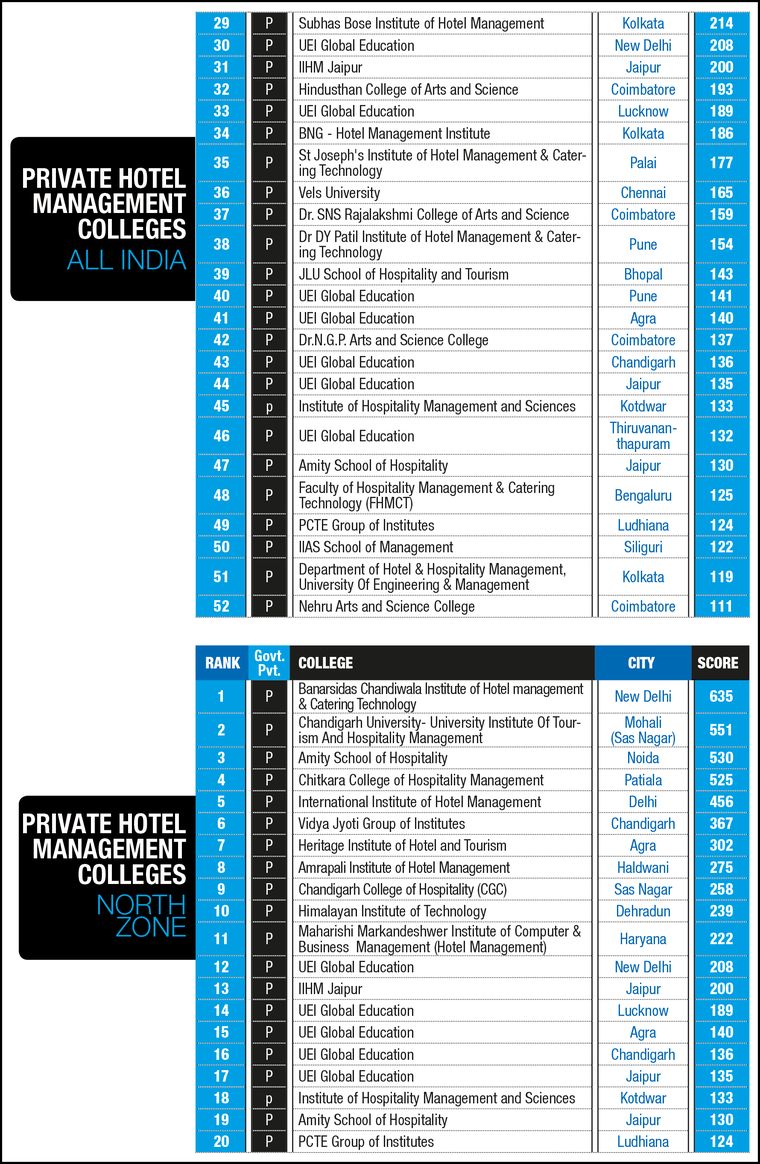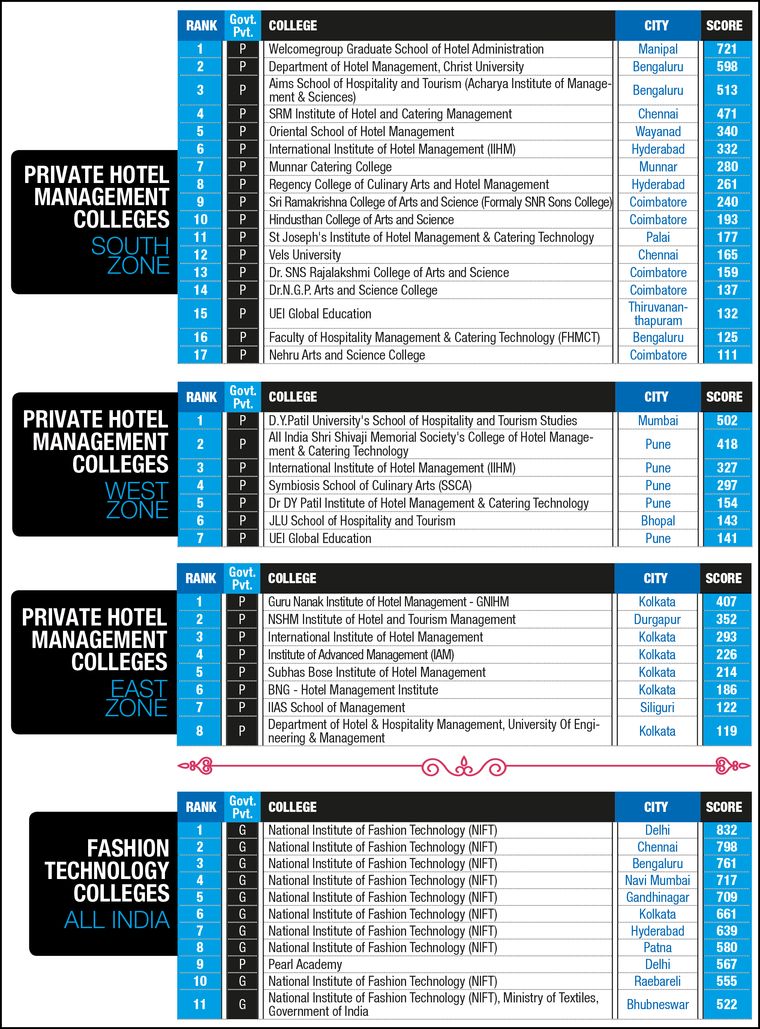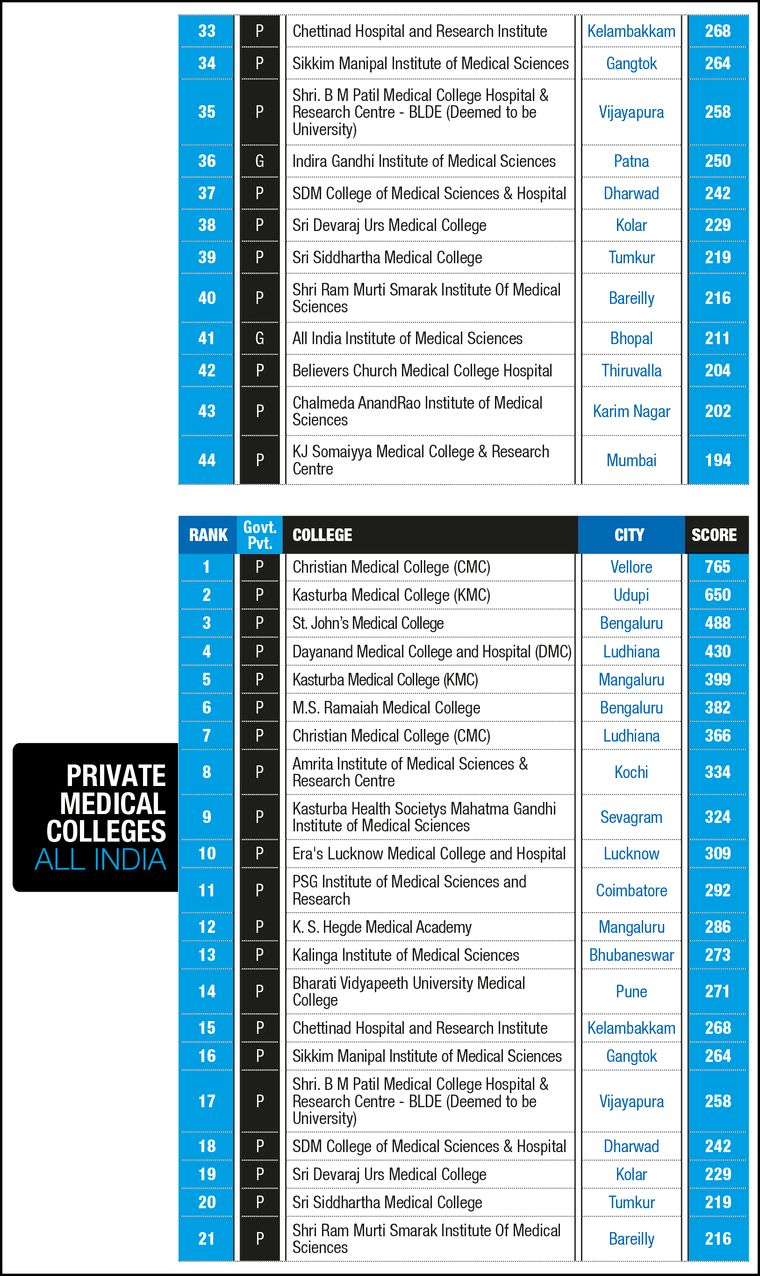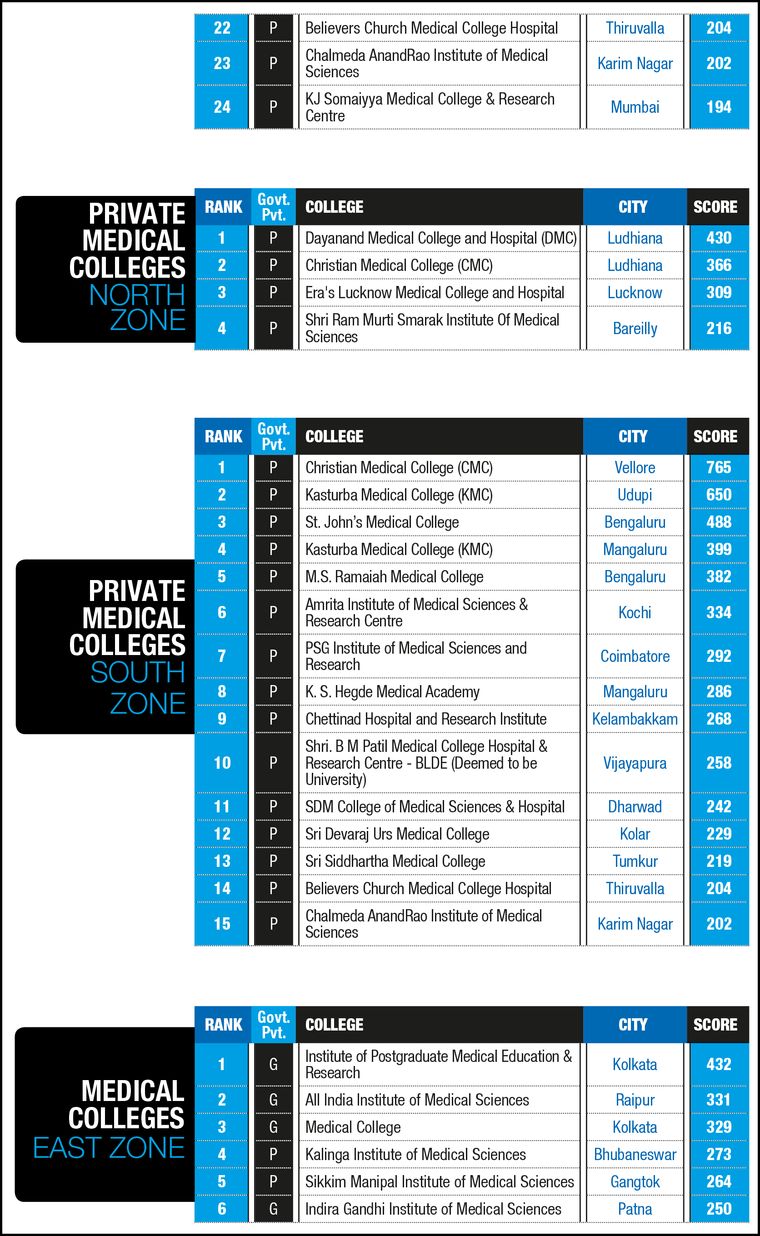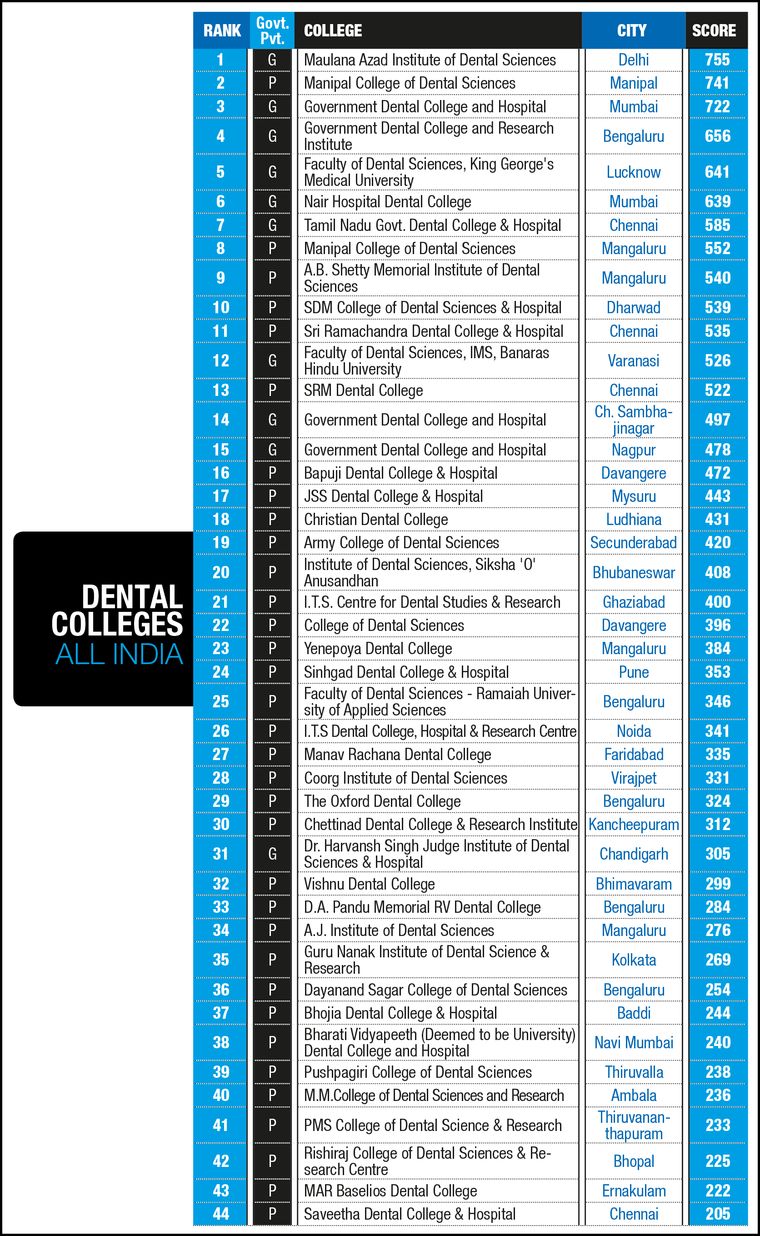A recent conversation with an outgoing student left a lasting impression on Professor John Varghese, principal of St. Stephen’s College, Delhi. When Varghese asked the student about his future plans, he replied that he was joining IIT Madras to study chemistry. Varghese was happy. But, when he heard what the student wanted to do after going through IITM’s renowned chemistry department, he was elated. “Sir, you said during an assembly that though our college had successful alumni, we do not have a Nobel laureate,” the student said. “I am going to try to win a Nobel Prize.” Moved, the principal responded with a hug. “If the students have such aspirations, they will surely do very well in life,” said Varghese.
This is just one example of the students at India’s top colleges aiming for the sky. As the country pushes on towards its vision of being a developed nation, today’s students will have a key role to play in ushering in a better tomorrow. Viewed in that context, the responsibility on colleges takes on a whole new significance. Nothing less than excellence will suffice. Colleges also have the vital duty of character building.
Thankfully, India’s best colleges have always been aware of their critical task, even if parents, or indeed students, are sometimes guided by more short-term goals. While academic rigour is a given in the country’s top colleges, there also seem to be a lot many initiatives afoot that are geared towards the wholeness of developing young minds. And, they stem from clear long-term vision.
You can feel this consciousness in the ambience of St. Stephen’s, which has been ranked the best science college and the second best arts college in India by THE WEEK-Hansa Research Best Colleges Survey 2024.
The 143-year-old institution has created an archive with priceless documents and is in the process of scaling it up and opening it to scholars from around the world. The archive was created in honour of the late David Baker, former history teacher at the college. An Australian who got naturalised as an Indian citizen, Baker singlehandedly put together a collection of documents which dated back to pre-independence times. His collection, sorted and catalogued, eventually grew to fill eight cupboards. After his retirement in 1998, he stayed on. “We were happy to have him here as he was a treasure trove of knowledge and a good influence on all of us,” said Varghese. “We hope to scale up the archive in a big way.”
Apart from preserving and imparting knowledge, there is also a focus at Stephen’s on nurturing talent. This is evident in the fact that the college’s academic management portal was designed in-house, by a former student who went on to become a non-teaching staff member. “We could have outsourced this work by paying a few lakh rupees, but we thought that this is something that we should encourage so that in-house talent could be successfully nurtured,” said Varghese. A similar ethos is also reflected in the incubation centre set up by the college about three years ago.
Though Stephen’s generally gets the best students in the country, it has been facing a problem since the Common University Entrance Test was introduced. “The Delhi University feels that we should go only with the CUET,” said Varghese. “However, we feel otherwise as we have proved over 14 decades that it is good to have an interview at the entrance level as that helps young people who are entering college to project themselves and put their best foot forward in terms of not only academics, but their own aspirations and other interests. Our admission process is wholesome. For this, we have had to go to court and it was decided that for the minority students we can have the interviews, but for the general students it would only be the CUET. The general students do not face the interview. The minority students have to take the CUET as well face an interview for getting selected in our college.”
He said the interviews also help identify how the college can help students achieve their aspirations. For the teachers, too, interviews are an exciting part of the process. “At the end of the day, we are very happy about the kind of students we get after the interview process,” added Varghese. And why not, with students who aspire to be Nobel laureates.
That is one box that Lady Shri Ram College has already checked. LSR has already produced a Nobel laureate―Myanmarese leader Aung San Suu Kyi. The college, which has been ranked first in arts, second in commerce and third in science in THE WEEK-Hansa survey, was established in 1956, in a school building in Daryaganj. Professor Suman Sharma, principal, LSR, said that the focus was currently on collaborative research between teachers and students.
Jyotsna Arora, faculty in the commerce department, is staff adviser to the student union. She is also the convener of the entrepreneurship cell. She mentions a project at LSR known as Bahubhashi―a cultural exchange programme. Under the programme, the college organises two to three events, every six to eight months. These events attempt to showcase different languages and cultures. “Recently, we had an event for Gujarati, Assamese and Bengali culture, that included food and heritage,” said Arora. “We have also had a vibrant Onam dance and a Bihu dance, where a lot was spoken about the rich heritage associated with these languages [and cultures]. The college magazine has 16 languages and is the only magazine in the university which has 16 languages.”
While such initiatives at colleges could help make tomorrow’s India more inclusive, there also has to be a focus on addressing one of the country’s biggest challenges―the lack of jobs. Towards this end, apart from the constant attempt to keep the curriculum up to date, there is also a consistent push to encourage entrepreneurial instincts. At LSR, entrepreneurs and venture capitalists are invited to campus and such events are open to students from other colleges, too. The students meet these potential funders and discuss ideas.
The kind of exposure the students are getting is clearly transforming their outlook. Jagriti Mishra is a final year student at LSR. She hails from Ayodhya and recently became the president of the student union. She said that LSR had taught her about the power of community and collaboration. And, she is already putting her learning to use to make a difference. Mishra launched an initiative, wherein the books of third year students get transferred to first years. This helps students from financially weak sections, and also leads to reuse of resources that may otherwise end up as garbage, thereby contributing to sustainability in a small way.
Colleges also have initiatives highlighting contemporary issues. For instance, one event at LSR had speakers telling students about dealing with false information in the age of the internet.
Student engagement has always been a key indicator of a teacher’s success, but it has perhaps not always been given due importance. This has definitely changed. Shri Ram College of Commerce (SRCC), Delhi, epitomises this change. At SRCC, which is ranked the best commerce college by THE WEEK-Hansa survey, teachers employ distinct styles of teaching and adopt multiple methods. For instance, in the case of a topic like the budget, the approach is more interactive, complete with role play. For more technical topics, the approach is modified suitably. As soon as the theoretical component is over, the teachers supplement the teaching with a term or a research paper on the topic. There is also attention on what the students learn from outside the classroom.
Garghesh Patil, a student at SRCC who hails from Maharashtra, said he had wanted to secure admission at the college since he was in class 10, as it is considered the best college in Asia for commerce. He said he liked the two-level lecture system at SRCC, wherein there are core lectures followed by the opportunity to clear any doubt as part of a smaller classroom (tutorial lectures). “Every teacher has a different teaching methodology and each one has something different to share,” said Patil.
SRCC is also heavily involved in training and consultancy. Currently, the faculty are training officials from the Reserve Bank of India and the ministry of corporate affairs. They teach advanced accounting, corporate governance, financial derivatives, economics and public policy. The teachers also learn from these exchanges and pass on that learning to the students.
The faculty are also involved in projects with ministries, including, intriguingly, with the ministry of culture. “The idea with projects of the ministry of culture has been about reviving ancient Indian economics and culture,” said Professor Simrit Kaur, principal, SRCC. “Though we are talking about ancient India, we are aligned with what the future requires. We also did a project for the Competition Commission of India on surge pricing. Interestingly, the cab aggregators in India have been regulated based on our study. This project was futuristic because algorithm and future collisions are all about data-driven technologies, and we studied dynamic and surge pricing. Many of our students are also involved in such projects.”
The college recently got a project from the Indira Gandhi National Centre For Arts. It covers the high gold reserves in ancient India and why it dipped, aimed at correlating the past with the present. “All these projects help our faculty in teaching our students better as they are able to bring in learning from these projects to the classroom,” said Kaur.
Her office has a Gaurahari art work. Artisans of Gaurahari village in Uttar Pradesh’s Mahoba practiced the once thriving art form of making handicrafts out of a particular type of stone, called gaura patthar, which is said to be found only in the village. The artisans were struggling to make ends meet and there were only 42 families left in the craft when SRCC intervened. The students helped the artisans to establish market linkages for their products.
Learning hands-on, and saving livelihoods while doing it!
At Hansraj College, which is one of the largest constituent colleges of the University of Delhi, pictures of famous alumni are displayed prominently on the walls. Foremost among them is Shah Rukh Khan. At the college, which is ranked fifth in arts and commerce and seventh in science by THE WEEK-Hansa survey, there has been an increased focus on skills and employability, aligned with the Viksit Bharat vision. “We are offering industry relevant skill enhancement courses, internships and practical training opportunities,” said the principal, Professor Rama, who uses only one name. “To promote a culture of research, we are investing in infrastructure and resources, and funding students and faculty, thereby fostering innovation.”
Students highlight the exposure they get at the college. For instance, Rahul, who does not use a surname, is a student who hails from Siwan in Bihar. He is the vice president of the civil services society in college. “I come from an agrarian family,” he said. “I got selected from our college to the G20 organising committee and got to work with top leaders of the world. It was a life-changing experience which would not have been possible in my small town. I was also selected to go to Russia for an event.”
India’s hosting of international events such as the G20 and the immense potential in the country’s tourism sector highlight the importance of training in the hospitality sector. Enter, the Institute of Hotel Management, Catering & Nutrition, Pusa, Delhi―the first and, at present, the best hotel management college in the country.
Established by the ministry of agriculture in 1962, it was later taken over by the ministry of tourism. Renowned chef Sanjeev Kapoor, Puneet Chhatwal, CEO of Indian Hotels Company Limited, and Rajeev Menon, president, Asia Pacific (excluding China), Marriott International, all are alumni of IHM Pusa.
Devdeep Raj Sinha, who hails from Tripura, is a second-year student at IHM Pusa. He said he has learnt a lot about cooking, the front office department and housekeeping. “Because of the practical experience here, it is easy to apply those in the actual hotel industry,” he said. “It helped me a lot during my training at the Oberoi in Delhi.” He has specialised in Thai cuisine and has also learned French and Italian cuisines. He now wants to learn Chinese cuisine.
IHM Pusa has nine kitchens and five bakeries, plus a live bake shop. The students spent a considerable duration of time every day in the labs. There are many students who specialise in bakery and confectionery. Students participate in a number of events, including those held at the Red Fort and on Kartavya Path lawns. There is also a cell in the institute which works on live projects. Currently the institute is working on redeveloping and redesigning the AIIMS cafeteria, which is used by around 23,000 employees daily.
“They have given us the task to redesign the cafeteria, which is a brownfield project,” said Kamal Kant Pant, principal, IHM Pusa. “They want to install new equipment to ensure better hygiene and save labour. They also want to accommodate more people and serve healthier meals. The redesign needs to start with the menu, and the space has to be designed ergonomically, which includes human engineering elements, and lighting. We take our students to such locations; they assist faculty.”
While highest-ranked colleges across most disciplines are in Delhi, other education hubs in the country also provide viable options for high quality education. Loyola College, Chennai, which is ranked fourth in science and commerce and sixth in arts, is on a mission to align itself with the growth trajectory of India so that its students can fully utilise emerging opportunities. The college has also been striving to prepare students to work with the sustainable development goals in mind. In addition, Loyola also works towards inclusivity by promoting diversity, addressing gender disparities and supporting marginalised communities.
“We have been focusing on application oriented programmes, improving technical expertise, problem-solving skills and abilities relevant to various industries,” said Reverend A. Louis Arockiaraj, SJ, the principal. “Students learn to create value, identify opportunities and adapt to changing market dynamics. They also understand the impact of economic policies, global trade and financial markets.”
In order to empower students to become job creators and contribute to the economic landscape, the entrepreneurship cell provides seed funding to students with promising ideas, apart from mentorship and incubation.
Loyola has also signed MoUs with 16 nationally reputed institutions and 28 internationally acclaimed institutions. The college has recently added a robotics lab and also organises events that challenge students to apply their knowledge to solve real-world problems relevant to Digital India and Make in India. This not only promotes problem-solving, but also encourages students to think about the practical application of research.
St. Xavier’s College, Mumbai, too, has taken multiple initiatives to fine-tune its approach to be in line with national objectives. The college, ranked eighth in arts, has introduced skill development programmes that align with the emerging needs of industries crucial for India’s growth, such as technology, health care, renewable energy, and to support entrepreneurship. This includes courses such as MSc big data analytics, MA life span counselling, PG diploma in expressive art therapy, and courses on patents, including how to write a patent.
It has tried to bridge the gap between academia and industry, by collaborating with leading companies and organisations. This collaboration can lead to joint research projects, internships, guest lectures, and industry-relevant curriculum development. For instance, its MSc big data analytics is in collaboration with Tata Consultancy Services. The college is in the process of signing an MoU with Bloomberg, Harvard Business School Publishing, Maharashtra State Skill Development Society and the Maharashtra State Innovation Society to enhance the on-field job exposure for its students.
“Access to Bloomberg can enhance research, deepen understanding of market dynamics and provide practical insights into the finance industry,” said Professor Rajendra Shinde, principal, St. Xavier’s, Mumbai. “It is extremely rare for an undergraduate college to offer Bloomberg terminals on campus. It will provide students with hands-on experience and a competitive edge in their careers.”
There is also a major emphasis on research, with the college investing more in research infrastructure and facilitating international collaboration, apart from providing a grant for its faculty.
Here, too, like in other top colleges, there is a strong emphasis on inclusivity and diversity. The college has 70 per cent female students and also has a gender cell, which addresses needs across the spectrum. Among faculty and administration, too, women account for 60 per cent of the staff strength.
The Xavier’s Resource Centre for Visually Challenged provides free training to visually challenged students as well as students with various disabilities. “In any given academic year, we have eight to 10 visually challenged students and around 125 students with other disabilities,” said Shinde. “The enabling committee helps these slow learners with various accommodations throughout the year, dealing with 22 disabilities, as per the Disabilities Act.”
In addition to technical knowledge, the college is also focusing on the development of soft skills such as communication, teamwork, and problem-solving. 展orkshops and courses on life skills prepare students to navigate the world effectively,�said Shinde.
Cultivating skills based on national needs is necessary to foster inclusive growth among students. Moreover, education is an instrument to enhance quality of life and upgrade individuals. The inclusion of value education―gender equity, environment awareness and sustainability, waste management, human values and professional ethics―is an important parameter that moulds students as responsible citizens.
B.L. SHIVAKUMAR, PRINCIPAL AND SECRETARY, SRI RAMAKRISHNA COLLEGE OF ARTS AND SCIENCE (AUTONOMOUS), COIMBATORE



